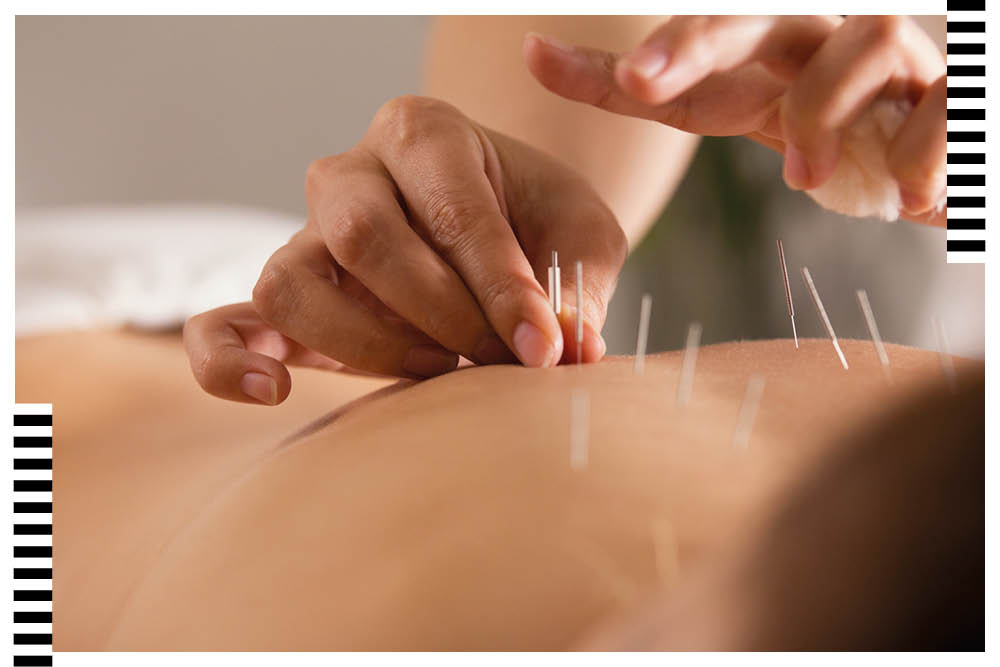Is Acupuncture the key to achieving wellness today?

Most of us just want to feel ‘well’. Yet achieving this goal may seem a struggle given the busy lives we often lead. What’s more, it is inevitable that we will all, at some point, have to deal with a health and wellbeing issue, even if very mild and not particularly bothersome. In many cases, health problems are easily resolved, as our minds and bodies have an incredible ability to return to a state of good health. For some, however, poor health, whether physical or mental, can become part of the fabric of their life. Unexplained, hard to treat, ongoing or recurrent health concerns are all too common, and for many a daily reality. Pain, heightened stress and anxiety, infertility, allergies, headaches, skin disorders, tinnitus, insomnia, digestive problems – these are just some of the many common conditions that can affect our overall sense of wellness, leaving us feeling frustrated, low, perhaps even fearful, and disempowered. This is because wellness is more than just getting rid of a disease. It is about feeling balanced, in control and having a sense of harmony within ourselves and the world we live in.
ACUPUNCTURE AND WELLNESS
So how can we work on achieving wellness in today’s world, when the odds are seemingly stacked up against us? The answer is simple: The ancient therapy of acupuncture. The reason for this? Acupuncture provides an approach to wellness that focuses on treating the person rather than the condition, and works with our natural in-built ability to heal and self-repair. Acupuncture is perhaps best described as a transformative system of medicine, in which initiating change in a person, physically and mentally, is key. Within this system, wellness is seen as a norm, which every individual has the potential to move towards. If this all sounds rather obscure to you, then a few basics about the theory behind acupuncture and what happens during an acupuncture treatment may help you better understand how acupuncture can help you achieve wellness.
HOW DOES IT WORK?
Although there are different styles of acupuncture practised in the UK today, it is the therapy’s roots in oriental medicine and philosophy, that have enabled it to develop into a holistic, yet highly intricate system of medicine. One of the basic premises of acupuncture is that life, whether in humans or the natural world, is kept in balance and able to evolve, through the two opposing, yet interdependent forces of Yin and Yang. Each one of these forces, or energies, has different functions and qualities. A Yin energetic effect, for instance, is considered to have a cooling influence on both body and mind, whereas a Yang energy creates heat or dryness. Each one of these needs to be kept at the right level to achieve balance and be able to appropriately respond to changing requirements.
A simple example of how this interrelationship works, would be a hot summer’s day when the cooling system you have installed stops working. That nice, comfortable temperature you created by introducing some cool air into your office or home is no longer there, as the room starts heating up. According to acupuncture theory, a similar process may happen in our bodies, if either Yin or Yang functions get depleted through lifestyle, ageing, illness, medication, certain foods, stress, the environment we live in, and so on. For example, when we are under a lot of pressure and feeling stressed, we will likely burn through our cooling Yin reserves faster, so that suddenly our bodies start showing signs of overheating, for instance in the form of spontaneous sweating, particularly at night, the coolest, most Yin time.
ACUPUNCTURE IN PRACTICE
With this understanding of the fundamentals of life, patterns of disease may be established and multiple factors, symptoms and effects can be taken into account simultaneously in the diagnosis and acupuncture treatment. If an internal imbalance arises, then specific organs or areas of our body may start showing signs of distress. This becomes the symptoms. These symptoms are seen not only as a way to make us aware of the imbalance, but also as an invitation to change. An acupuncture treatment provides a first step in initiating this change. Through the insertion of ultra-thin needles into acupuncture points, regulating or stimulating functions are triggered, enabling cell renewal and the release of cell secretions, such as chemical messengers, including hormones and neurotransmitters. Clinical research into acupuncture has been able to demonstrate how particular parts of the brain are activated during an acupuncture treatment, or how it can increase blood flow and circulation.
These physiological changes will result in a person experiencing improvements in their symptoms, which can then be maintained or prevented from returning by making sure we follow some simple steps to look after ourselves: keeping our energy reserves well topped up through good nutrition, sleep and breathing, and being mindful of the pace at which we may be depleting our stores, through work, relationships, thought patterns and emotional upheavals. The connection between what we do, what we experience, and what happens in our bodies and minds, is something that enables acupuncturists to provide guidance to patients on what adjustments or lifestyle changes may be helpful to support longer-term results. It also allows patients to fully respond to the invitation to change and empowers them with a sustainable approach to achieving wellness.
PINPOINTING THE PROBLEM
Having outlined some of the mechanisms by which acupuncture works, you are probably wondering how an acupuncturist determines where on the body the acupuncture needles should be placed during treatment. According to acupuncture theory, the entire body is mapped and divided into channels along which the acupuncture points are found, some of which you may already be familiar with. For example, anti-nausea wristbands are designed to help stimulate an acupuncture point known for its ability to relieve morning and motion sickness. You may have also noticed yourself or others pinching the skin between the eyebrows – the location of a wonderfully calming acupuncture point known as Yin Tang and used also sometimes in yoga as a way to improve flow in our mind and body – seemingly creating space to think and release tension.
The sensation when the needle is inserted is akin to a simple pressure, although much more goes on behind the scenes, as the micro-trauma to the skin, as well as the signals that are sent out to activate or deactivate certain parts of the brain, not only re-establish internal balance to help address specific health issues, they also induce a sense of calm and relaxation, which is why most people report feeling very relaxed after their acupuncture session.
A trained acupuncturist will always take time to explore with a patient their medical history, day-to-day health and lifestyle factors in order to establish the root cause of the imbalance and how it has affected different organs and body parts. Specific acupuncture diagnostic techniques are also used to this end. These include looking at the patients’ tongue for signs of heat, cold, stagnation or fluid retention, checking their pulse in several locations for aspects such as speed and strength, and taking note of the sound of their voice, their complexion, and their underlying emotional state and tendencies. These diagnostic techniques suggest specific blocks or sites of stagnation in a person’s system, which can then be targeted. This combination of diagnostic information allows for a highly personalised approach to treatment: it is usually the case that entirely different treatment plans and point combinations are used on patients presenting with the same condition, as their story, as well as their emotional and physiological response, will have triggered different types of internal imbalances, even if manifesting through the same symptoms.
GIVE IT A GO
So, if you are looking to get and stay well, operate at your very best, and be back in charge of your health and wellbeing, then it is time for you to give acupuncture a go. It is a completely safe, natural and gentle therapy which can nevertheless produce outstanding results. Wellness really is achievable even when we feel it is an upward battle. One thing is for certain: if we never try, we will never know. And one of the most frequent comments I hear from my patients is that they just wish they had tried it sooner.

She treats patients looking for help with a wide range of health and wellbeing issues and has specialist interests in fertility, anxiety, and cancer support.












